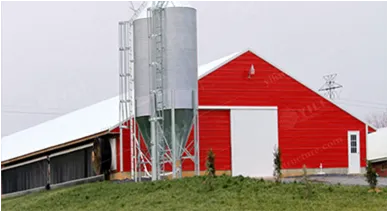- Afrikaans
- Albanian
- Amharic
- Arabic
- Armenian
- Azerbaijani
- Basque
- Belarusian
- Bengali
- Bosnian
- Bulgarian
- Catalan
- Cebuano
- Corsican
- Croatian
- Czech
- Danish
- Dutch
- English
- Esperanto
- Estonian
- Finnish
- French
- Frisian
- Galician
- Georgian
- German
- Greek
- Gujarati
- Haitian Creole
- hausa
- hawaiian
- Hebrew
- Hindi
- Miao
- Hungarian
- Icelandic
- igbo
- Indonesian
- irish
- Italian
- Japanese
- Javanese
- Kannada
- kazakh
- Khmer
- Rwandese
- Korean
- Kurdish
- Kyrgyz
- Lao
- Latin
- Latvian
- Lithuanian
- Luxembourgish
- Macedonian
- Malgashi
- Malay
- Malayalam
- Maltese
- Maori
- Marathi
- Mongolian
- Myanmar
- Nepali
- Norwegian
- Norwegian
- Occitan
- Pashto
- Persian
- Polish
- Portuguese
- Punjabi
- Romanian
- Russian
- Samoan
- Scottish Gaelic
- Serbian
- Sesotho
- Shona
- Sindhi
- Sinhala
- Slovak
- Slovenian
- Somali
- Spanish
- Sundanese
- Swahili
- Swedish
- Tagalog
- Tajik
- Tamil
- Tatar
- Telugu
- Thai
- Turkish
- Turkmen
- Ukrainian
- Urdu
- Uighur
- Uzbek
- Vietnamese
- Welsh
- Bantu
- Yiddish
- Yoruba
- Zulu
Oct . 16, 2024 07:56 Back to list
Designing Steel Structure Sheds An Overview
Steel structure sheds are increasingly popular in various industrial sectors owing to their durability, cost-effectiveness, and versatility. This article delves into the fundamental principles of designing steel structure sheds, emphasizing key considerations and benefits associated with this type of construction.
Understanding Steel Structures
A steel structure shed is primarily constructed using steel frameworks, which provide remarkable strength-to-weight ratios. This feature makes them ideal for large-span roofs without the need for intermediate columns, allowing for greater flexibility in interior space usage. The inherent properties of steel, such as resistance to weather conditions, pests, and decay, further enhance the appeal of these structures.
Key Design Principles
1. Load Considerations A fundamental aspect of designing any structure, including steel sheds, is understanding the loads that the structure will bear. This includes dead loads (permanent/static weights), live loads (temporary/movable weights), and environmental loads such as snow, wind, and seismic forces. Proper calculation and application of these loads ensure structural integrity and safety.
2. Material Selection While steel is the primary material used, different grades and types of steel can influence the overall strength and cost. Common choices include carbon steel and alloy steel, each offering different properties suited for specific applications. Considering factors such as corrosion resistance and tensile strength is crucial in selecting the right materials for the project.
3. Design Codes and Standards Adherence to relevant building codes and standards is vital in ensuring the safety and longevity of steel sheds. The design must comply with local and international standards, such as the American Institute of Steel Construction (AISC) guidelines or Eurocodes, which provide frameworks for materials, load considerations, and construction practices.
4. Thermal Considerations Steel can be a poor insulator, which raises concerns regarding temperature regulation within the shed. Designing for thermal efficiency may involve additional insulation materials or specific ventilation systems to maintain comfortable temperatures, especially in agricultural or recreational settings where temperature control is critical.
steel structure shed design

5. Aesthetic Considerations While functionality is paramount, the aesthetic appeal of the shed should not be overlooked. The design can incorporate various architectural elements, such as sloped roofs, color schemes, and cladding materials, which enhance the visual appeal while serving practical purposes.
Benefits of Steel Structure Sheds
1. Cost-Effectiveness Steel is often more affordable than traditional materials like wood and concrete, especially when considering long-term durability. The reduced maintenance needs and longevity of steel structures contribute to considerable cost savings over time.
2. Speed of Construction Prefabricated steel components facilitate quicker assembly on-site. This speed translates to reduced labor costs and shorter timelines, making steel sheds a preferred choice for projects with tight schedules.
3. Environmental Considerations Steel is recyclable, and using recycled steel in construction lessens the environmental impact. Additionally, steel's durability reduces the need for replacement and discourages waste.
4. Versatility Steel structure sheds are adaptable and can be designed for a multitude of purposes—storage, workshops, agricultural uses, or even as temporary structures for events. Their customizable nature allows for scaling up or down based on specific project needs.
Conclusion
The design of steel structure sheds embodies a blend of creativity, engineering principles, and practical considerations. As construction technology continues to evolve, steel remains a leading material choice for its unmatched benefits in strength, flexibility, and efficiency. By adhering to sound design practices and leveraging the advantages of steel, builders can create structures that are not only functional but also enduring and visually appealing. Whether for commercial, agricultural, or industrial applications, the future of steel structure shed design looks promising.
-
How Do Prefabricated Steel Structures Transform Modern Construction?
NewsJul.14,2025
-
How Do Prefabricated Metal Buildings Redefine Modern Construction?
NewsJul.14,2025
-
How Do Prefab Insulated Metal Buildings and Steel Structures Revolutionize Modern Construction?
NewsJul.14,2025
-
How Do Pre - Engineered Steel Structures Redefine Modern Construction?
NewsJul.14,2025
-
Advancing Modular Construction with Prefabricated Metal Structures
NewsJul.14,2025
-
Advancing Industrial Infrastructure with Prefabricated Steel Solutions
NewsJul.14,2025
Products categories
Our Latest News
We have a professional design team and an excellent production and construction team.












